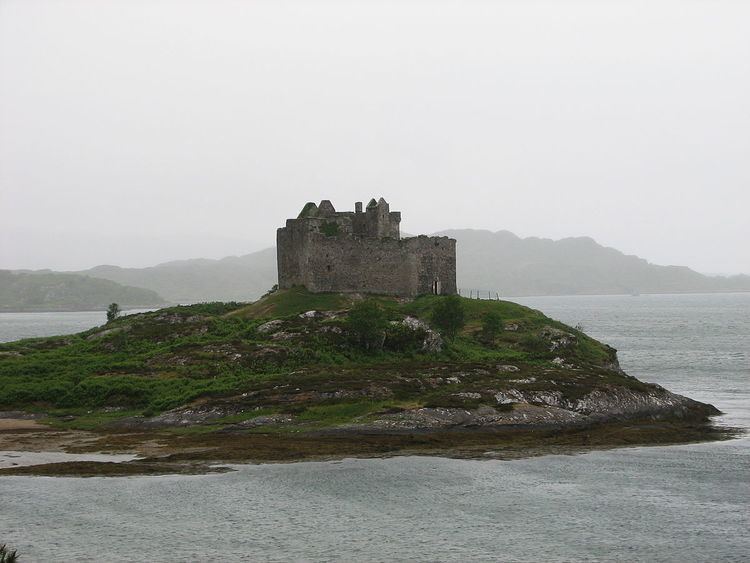Gaelic name Eilean Tioram OS grid reference NM662724 Address United Kingdom | Meaning of name dry island Island group Inner Hebrides Highest elevation 10 m | |
 | ||
Hours Open today · Open 24 hoursMondayOpen 24 hoursTuesdayOpen 24 hoursWednesdayOpen 24 hoursThursdayOpen 24 hoursFridayOpen 24 hoursSaturdayOpen 24 hoursSundayOpen 24 hours Similar Loch Shiel, Ardnamurchan, Mingarry Castle, Eilean Shona, Ardtornish Castle | ||
Castle Tioram (/ˈtʃiːrəm/) (Scottish Gaelic: Caisteal Tioram, meaning "dry castle") is a ruined castle that sits on the tidal island Eilean Tioram in Loch Moidart, Lochaber, Highland, Scotland. It is located west of Acharacle, approximately 80 km (50 mi) from Fort William. Though hidden from the sea, the castle controls access to Loch Shiel. It is also known to the locals as "Dorlin Castle".
The castle—a listed building and scheduled ancient monument—appears to have originally been a principal stronghold of Clann Ruaidhrí. The island the fortress sits upon is first recorded in a charter of Cairistíona Nic Ruaidhrí (fl. 1290–1318), daughter of Ailéan mac Ruaidhrí (died ×1296). According to early modern tradition, the castle was erected by Ailéan's granddaughter, Áine Nic Ruaidhrí (fl. 1318–50) in the fourteenth century. The castle served as the seat of the latter's Clan Donald descendants the next four hundred years.
Castle Tioram is the traditional seat of Clan MacDonald of Clan Ranald, a branch of Clan Donald. Castle Tioram was seized by Government forces around 1692 when Clan Chief Allan of Clanranald joined the Jacobite Court in France, despite having sworn allegiance to the British Crown. A small garrison was stationed in the castle until the Jacobite Uprising of 1715 when Allan recaptured and torched it, purportedly to keep it out of the hands of Hanoverian forces. It has been unoccupied since that time, although there are some accounts suggesting it was partially inhabited thereafter including storage of firearms from the De Tuillay in the 1745 Jacobite Uprising and Lady Grange's account of her kidnapping.
The castle is now in extremely poor condition and in 1998 was closed to the public at the request of Highland Council; a major structural collapse occurred at the north west curtain wall in 2000.
Controversial proposals to restore the castle by the new owners, Anta Estates, were announced in 1997 and received planning consent from Highland Council. This included the creation of a clan centre/museum, domestic apartments, and public access. However, Historic Scotland refused Scheduled Monument Consent—a decision upheld after a local public inquiry.
The Royal Commission on the Ancient and Historical Monuments of Scotland holds a substantial archive of research information, drawings, and photographs lodged by the current owners.
The castle can be reached on foot across the tidal causeway, but there is no access to the interior because of the risk of falling masonry.
Eilean Tioram is one of 43 tidal islands that can be walked to from the mainland of England, Wales & Scotland and one of 17 that can be walked to from the Scottish mainland.
